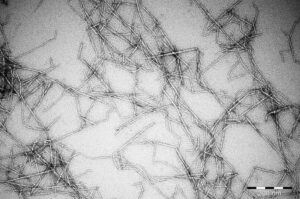Ruut Kummala
Laboratory of Paper Coating and Converting
E-mail: Ruut.Kummala@abo.fi
Wood-based nanocellulose is a potential biomaterial for advanced applications, such as, low cost 2D/3D cell culture platform, as a biomaterial for tissue engineering and for other biomedical applications. Advantages of nanocellulose include its modifiability, abundancy in nature and production in large scale.
Aims of this research are first to employ biocompatible and functionalized materials for cell culture studies. Second, develop required surface engineering methods for the material processing on various substrates. Third, understand the cell growth and decision-making processes influenced by the physicochemical properties of the surface. Finally, integrate printed electrodes for active stimulation of the cells.
In the beginning, the effect of nanocellulose surface charge to the prepared film properties in liquid state is studied. Surface charge is modified by TEMPO-mediated oxidation, in which primary alcohol groups are replace by carboxylic acid groups on cellulose chains. Due to higher surface charge, water absorption of immerged films in solutions without multivalent ions was increased. Furthermore, formed nanocellulose hydrogels have mechanical properties mimicking the skin tissues making it interesting material for studies of skin tissues cells. In the future, cell behavior is studied on nanocellulose-based surfaces by systematically changing the physicochemical properties of nanocellulose.
 |
 |